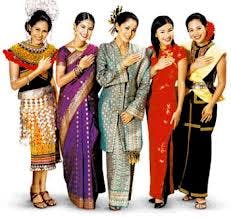“You educate a man; you educate a man. You educate a woman; you educate a generation.” ― Brigham Young
Jan 21, 2015
Story


Coming from a middle class family and quite a peaceful country, I have had relatively good access to education. I had a great schooling life at my local Convent school with sufficient extra-curricular activities and after-school support system to strengthen my knowledge. Both my parents prioritised education for my older brother and me, constantly urging us to do well. Till today, they want us to continue studying! The only challenges I faced after school were “Which university should I go to?”, “What course should I take?” and “What career options will I have with my chosen course?” And of course, I was not able to afford the “best” universities that charged exorbitant fees which were only payable by 2% of the world’s population! But that is a bare minimum “barrier” of the “developed” country or middle-class society.
On the other hand, if my parents were unable to support my study at a private university, I would have to vie for a place at public universities. This is the reality for many of my sisters in Malaysia. In Malaysia, the seats at government universities are offered based on a racial quota system. Despite one’s merits from their final examinations, the Malays get 60% of allocation, followed by Chinese who get 30% allocation and Indians who get 7% allocation (3% is allocated for “others”). This quota system is based on our population representation, and not what grades we achieved at the high school examinations.
As such, many Malaysian Indians and Chinese have limited opportunities as most of them would have been eligible for seats at public universities based on their grades but can’t access those seats because of their race. Institutionalised racial discrimination is a commonplace in Malaysia and the effects of such practices negatively affect the minority races who eventually seek education opportunities outside of Malaysia even if it means that their parents have to take out loans. At the first level, a Malaysian Indian or Chinese person would have to face racial discrimination in accessing education. Intersecting with this is the fact that they are women and then of course comes the issue of class and economic stature.
In Malaysia, patriarchy and favouring the male child is culturally accepted within most families. Consequently, gender stereotyping of the girl child and women and the expectation of their role in society and within the family is shaped based on these practices. Enrolment at primary and secondary schools are still relatively good and equal between boys and girls in Malaysia, at least in the urban areas. However, statistics show that the enrolment rate of women in technical courses (Millennium Development Goal Report for Malaysia) and male dominated courses are still low. In technical and engineering courses at the tertiary level, women only make up 31% of students. This barrier is related to access at a much higher level.
Coming back down to the basic education level, the biggest issue with access to education is the accessibility of education in rural areas (represents roughly 35% of Malaysia’s population). Due to a lack of data from the State on the population and level of school enrolment in rural and indigenous areas, it is an immense challenge to assess the needs of girls from those areas let alone addressing the issues. Many children born in the rural and indigenous areas have not been registered at birth especially if they were born at home. Thus, they do not hold birth certificates which are a major barrier to accessing basic services in general. In the recent years this phenomenon has made headlines on independent news and NGO child reports as the consequences of not having a birth certificate causes other issues such as not being able to access public health care and enrol into public schools.
The experiences of the rural community are directly linked to their weak and sometimes nonexistent economic rights as well as lack of education. The lack of political will and government accountability in addressing the needs of the rural community facilitates the continuation of the poverty cycle. When such circumstances continue to exist in Malaysian society, the State goes about their usual work and overlook its responsibility to the most marginalised groups.
But the biggest negative implications for these barriers are that it has prevented an entire group of young girls from progressing themselves and contributing back to their community and globally. Echoing the Girl Effect Project, the multiplier effect of educating girls can lead to a much happier and prosperous nation.
Firstly, Malaysia needs to collect sufficient data and have an effective census collection. The lack of legitimate data is a major barrier in addressing the issues on access to education for girls. Together we need to lobby the State about the realities at the grassroots and the importance of their accountability!




